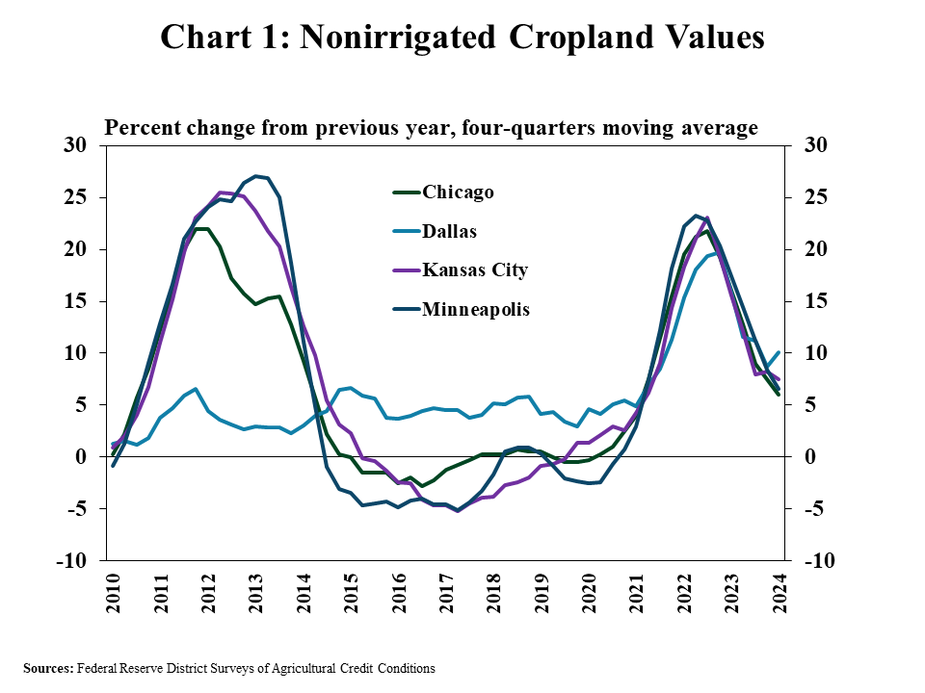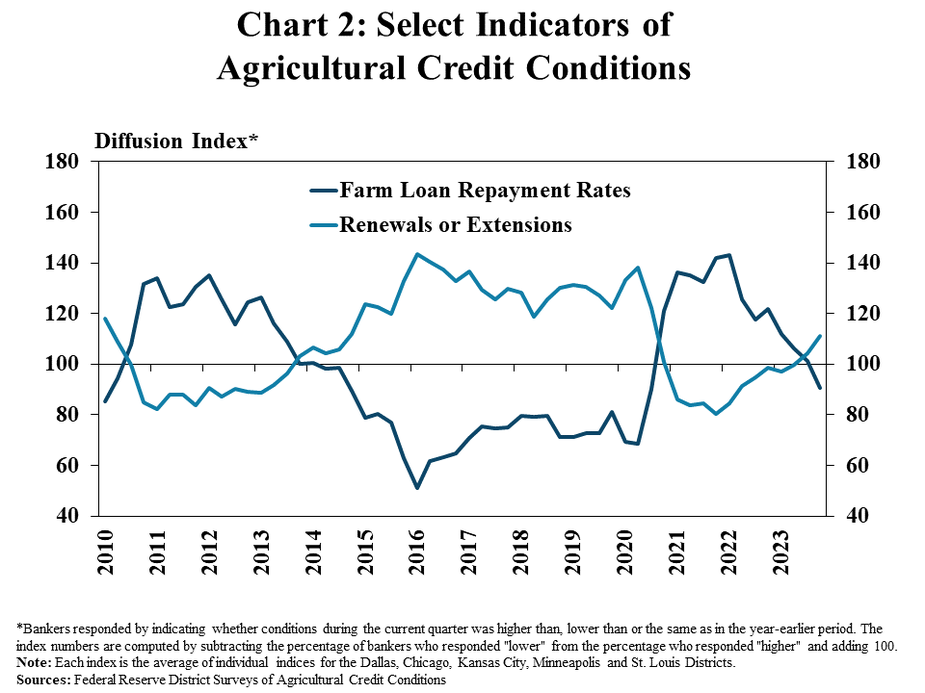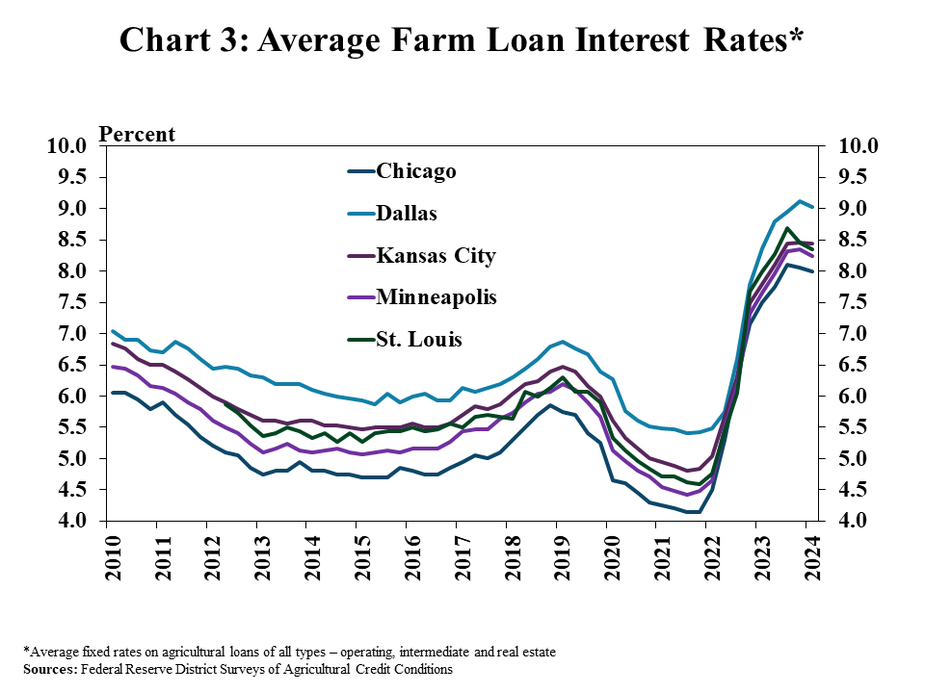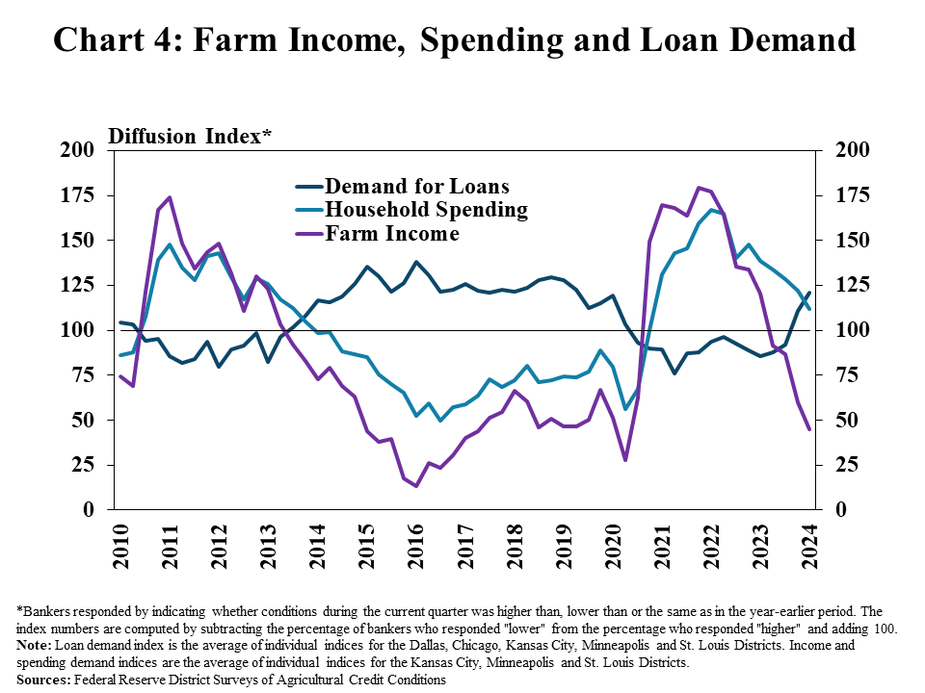Growth in farm real estate values slowed alongside slightly tighter credit conditions and steady interest rates. The pace of increase in the value of farmland halved from the previous year in most regions, according to the Federal Reserve Surveys of Agricultural Credit Conditions.
Farmers’ demand for agricultural loans increased and repayment rates declined in the first quarter of 2024, as farm income deteriorated further. Despite some tightening in financial conditions, farm household spending remained robust and balance sheets appear positioned to sustain thinner profit margins in 2024.
First Quarter Federal Reserve District Ag Credit Surveys
Growth in farmland values continued to moderate, but remained firm. The increase of nonirrigated farmland values across surveyed Districts averaged 8% in the first quarter of 2024, almost half of the growth observed in the year prior (Chart 1). The slowdown in farmland valuation reflected the marked decline in agricultural commodity prices and softer conditions in the sector.

The pace of increase in agricultural real estate values steadied alongside tighter credit conditions. Farm loan repayment rates, on average, deteriorated at a modest pace throughout participating Districts (Chart 2). At the same time, the renewal and extension activity on farm loans increased at a modest rate.

Farm loan interest rates were flat over the past quarter, staying at multi-decade highs. Alongside steady benchmark rates, the average interest charge on all types of agricultural loans was generally steady from the previous quarter (Chart 3). Across all Districts, average rates remained well above recent years and at the highest levels since 2007.

Demand for farm loans increased amid deterioration in farm income and robust household spending. Decline in farm income and farmers’ increased financing needs boosted demand for loans in the first quarter of 2024 (Chart 4). Household spending moderated at a slower pace than farm income, but remained firm. Credit needs in the sector may continue growing if farm income continues to soften alongside robust household spending.

Data and Information
Federal Reserve Ag Credit Surveys Historical Data
Federal Reserve Ag Credit Surveys Tables
External LinkAbout the Federal Reserve Ag Credit Surveys
The views expressed are those of the authors and do not necessarily reflect the positions of the Federal Reserve Bank of Kansas City or the Federal Reserve System.
